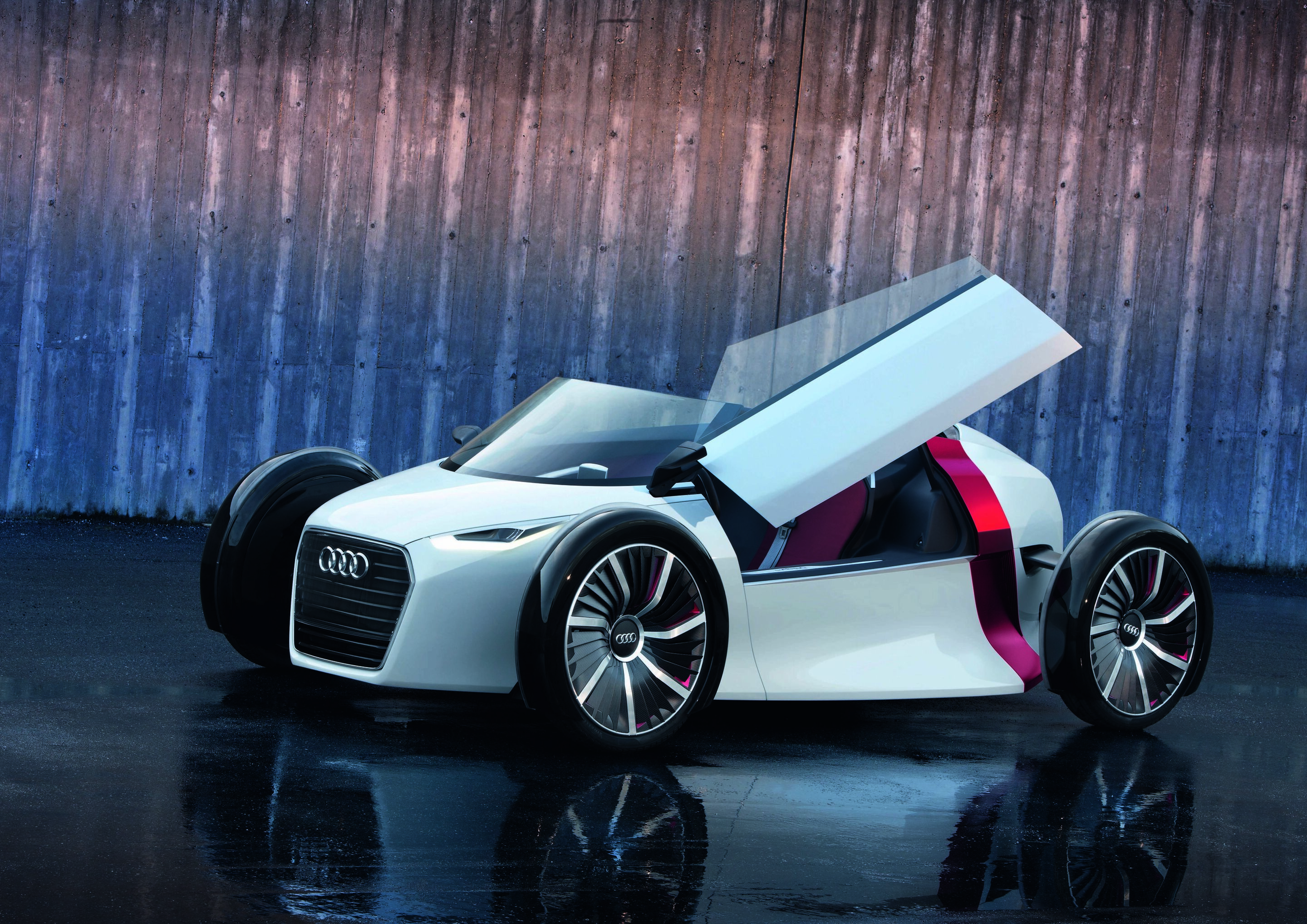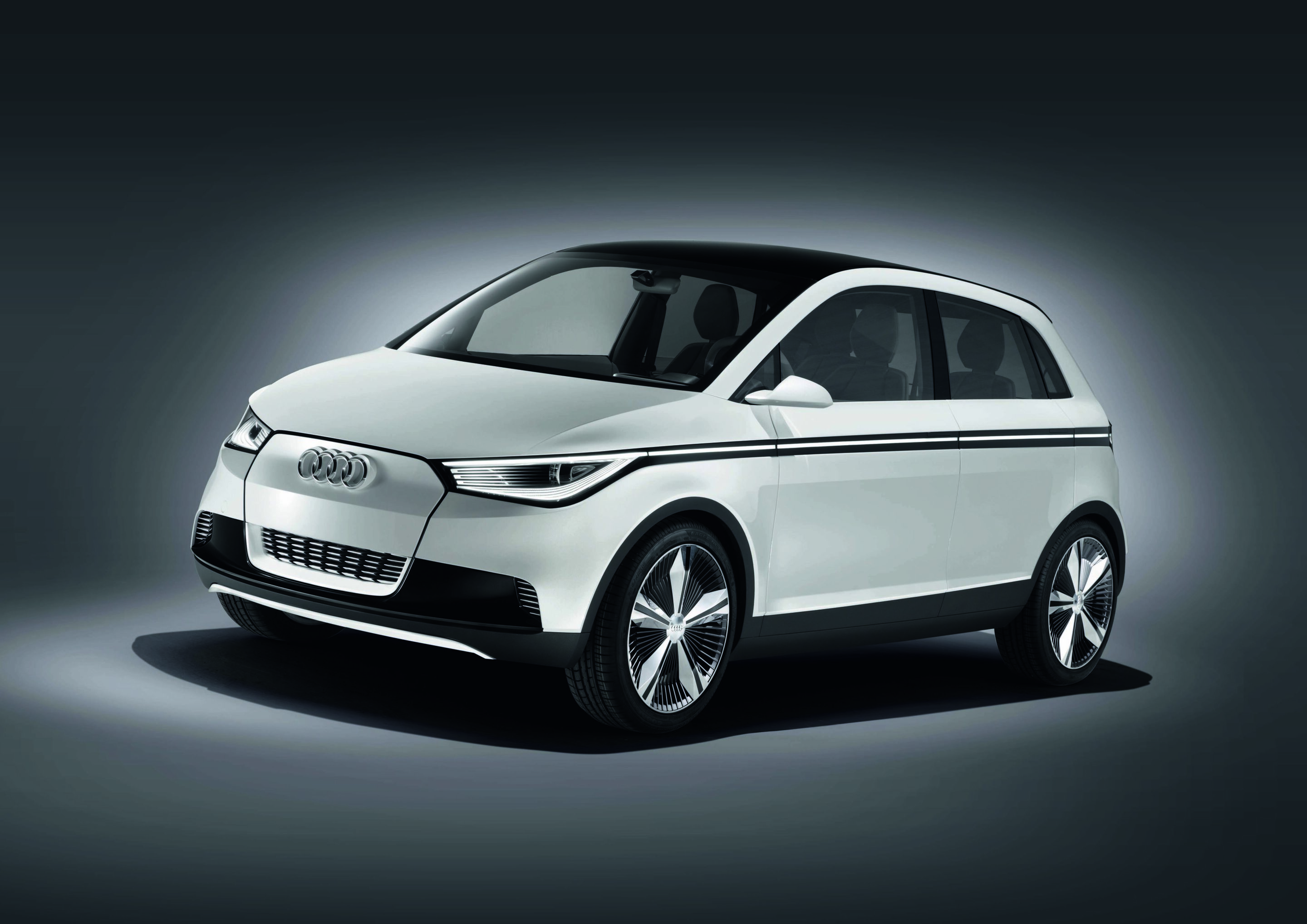Search
 The Audi urban concept
The Audi urban concept
It also marks the new entry point to Audi’s future range of electric vehicles, which is crowned by the R8 e-tron high-performance sports car. The Audi urban concept quite literally makes it easy to get into electric mobility. The technology study is targeted toward people who are interested in technology and are enthusiastic about new approaches to mobility, independent of their age and status. In particular, it addresses an urban public whose lifestyle both reflects the car’s modern concept and the driving pleasure associated with it and is a good fit for a possible innovative leasing system. Exterior design The Audi urban concept features an all-new design that still has certain historical roots in the Auto Union racecars of the 1930s. They were well ahead of their time conceptually: they were extremely lightweight and their engines were mounted in the rear. Their large, open wheels also stood out from the chassis – another parallel with the modern show car. Painted in Electric White, pearl effect, today’s technology study – 3,219 millimeters (126.73 in) long, 1,678 millimeters (66.06 in) wide, but just 1,189 millimeters (46.81 in) high – has a body on which all the lines are surging forward. The greenhouse is extremely flat. The roofline drops down like a wedge while the side window rises upward. The typical Audi tornado line gives the urban concept a strong shoulder. An upright, forward-leaning blade in front of the rear wheel accentuates the side view. The Speed Red contour gives the appearance of a roll bar and evokes the Audi R8 high-performance sports car. The flanks of the body flare outward toward the bottom to enlarge the floor. This serves two purposes: It generates downforce at higher speeds and it can be used to charge the battery via induction – a particularly convenient method. The characteristic Audi single-frame grill, which sports the four rings, appears as a closed surface on the Audi urban concept.
 The Audi A2 concept
The Audi A2 concept
When an electric voltage is applied, small particles integrated into the glass align so that the light can pass through the glazing unhindered. When the glass roof is darkened, however, it blocks the infrared component of the sunlight almost completely, effectively shadowing the interior. This is a further contribution to efficient temperature management in the purely electric powered Audi A2 concept. As with every Audi, the front of the technology study is dominated by the single-frame grill, in this case, in a special version tailored to electrical operation. The upper two-thirds are designed as a closed, folding surface, behind which are the charging socket and the cooling water connection. The four Audi rings are intensively sculpted; the engine hood is permanently bolted to the body. Mounted in the lower section of the single-frame grille, which acts as an air inlet, are highly efficient cooling elements made of graphite foam. The lightweight mineral is an excellent conductor of heat from the water to the ambient air. Eight blocks with six graphite elements each are located in the central air inlet. Another highlight of the A2 concept are the matrix beam LED headlights. An entire bundle of small light-emitting diodes arranged one above the other produce the low beam and high beam light. Microreflectors enable the precise positioning of the light. The LEDs can be switched on and off independently to illuminate the road perfectly in any situation. Numerous mini-LEDs set in the lower section of the headlight like a pearl necklace produce the daytime running light. The side view of the technology study is also typical Audi, with brawny wheel wells, a low greenhouse and an early-sloping roof line that ends in a long rear spoiler. Sharp lines frame tautly arched sheet metal surfaces. The dynamic line above the sills rises distinctly; the tornado line below the windows runs slightly upward.